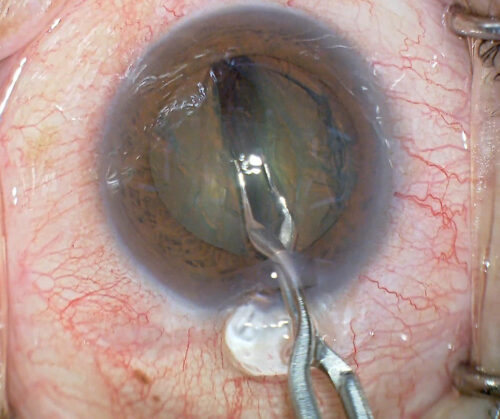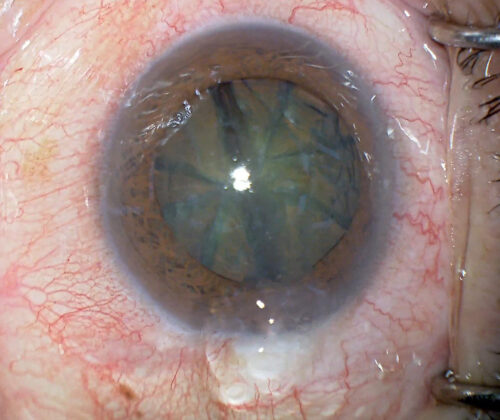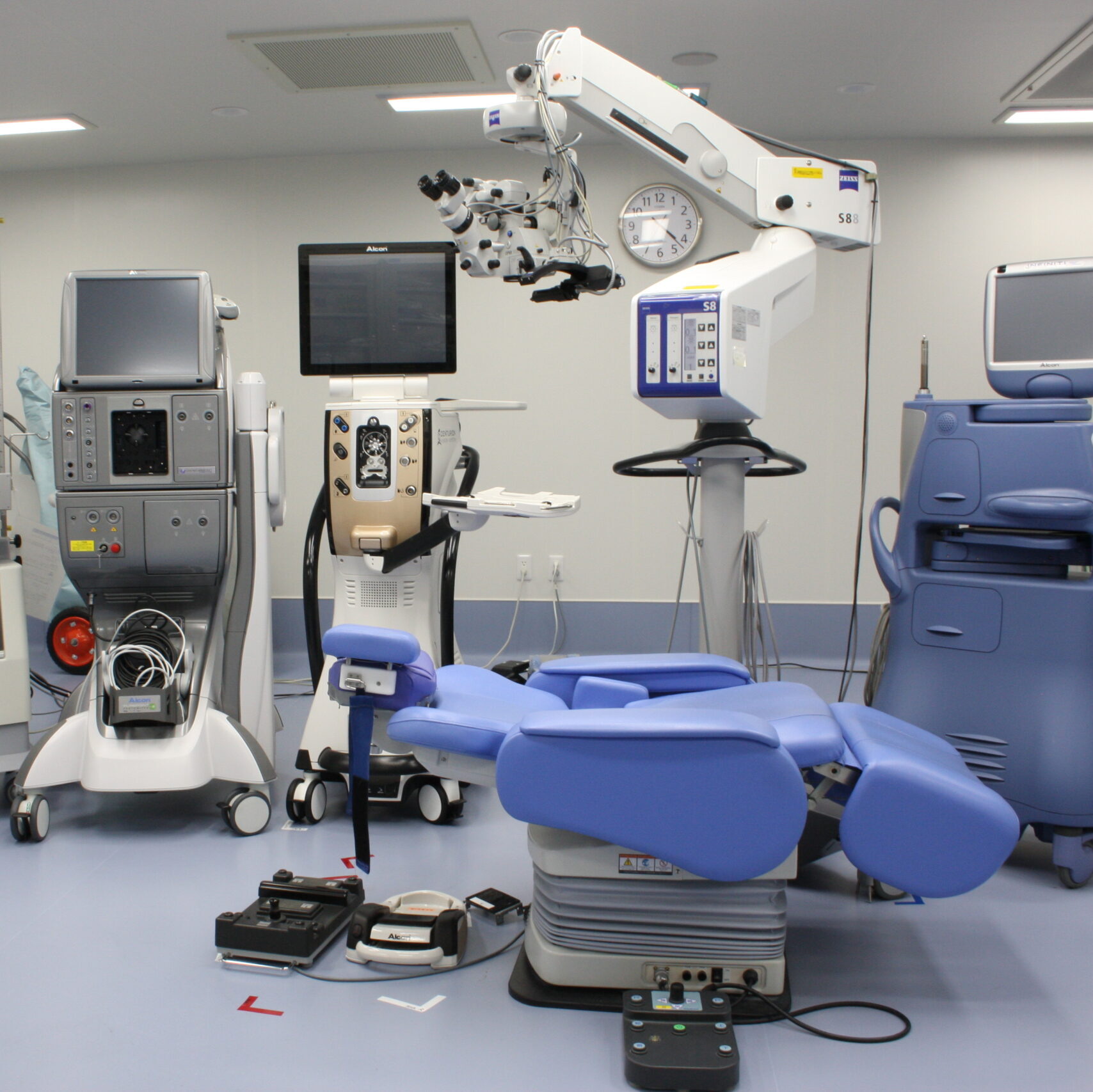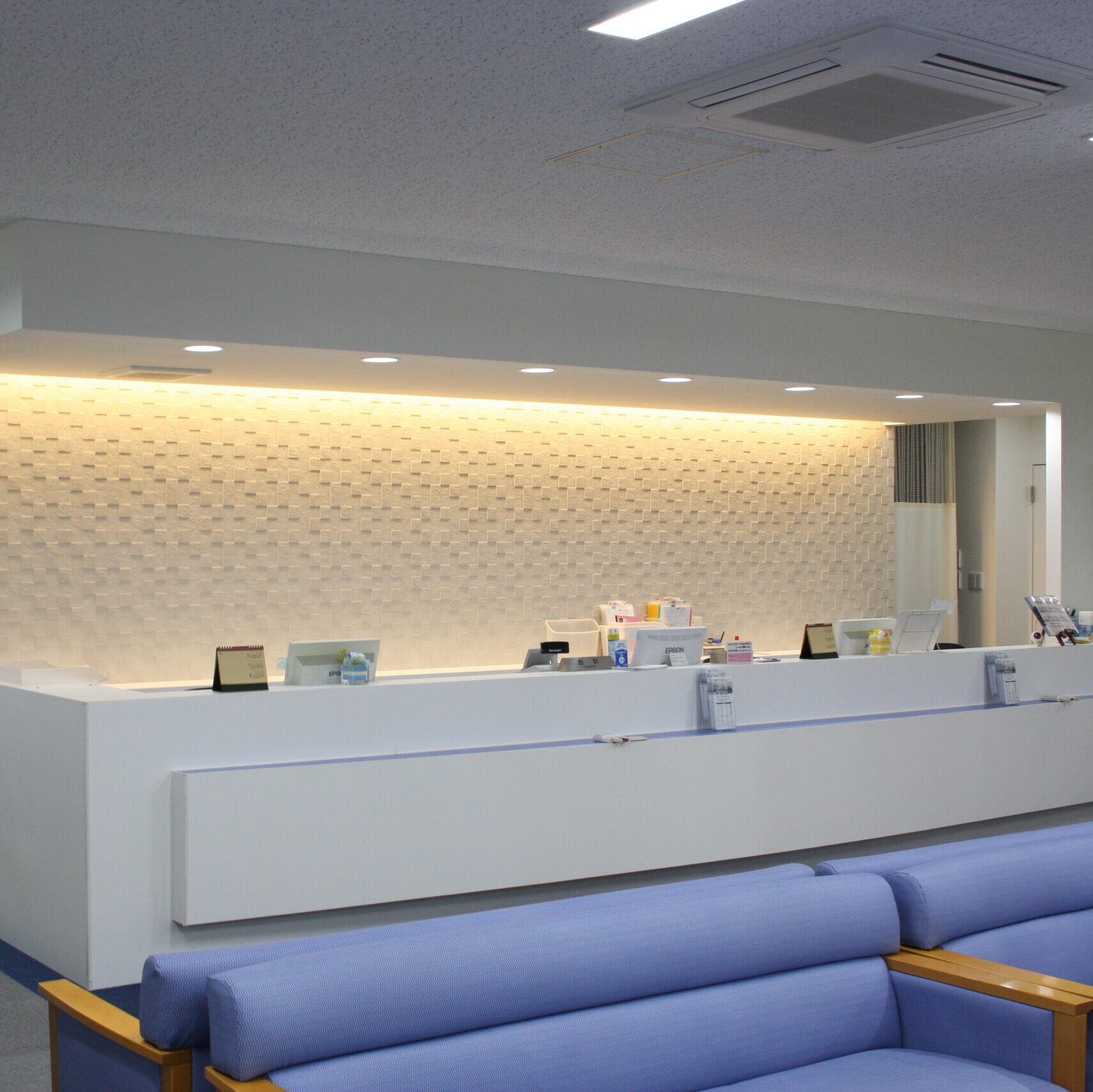
Eight-chop technique
In 2002, I improved the prechop technique, which only divided the lens nucleus into four sections, and developed the eight-chop technique, which always divides the lens nucleus into up to eight sections, and reported it at the Japanese Society of Ophthalmic Surgery meeting in 2009. We also developed specialized choppers with more delicate and sharp tips, such as the Eight-chopper I, Eight-chopper II, and Lance chopper.
The prechop technique initially attracted the attention of many cataract surgeons, but most of them gave up learning it because of its many complications. However, the eight-chop technique has been changed to a surgical procedure that places the highest priority on safety. First, an incision of 6 mm or more in diameter was made in the anterior lens capsule to reduce friction between the lens nucleus and lens capsule during phacoemulsification. In addition, the aspiration of the lens nucleus itself has become safer. Furthermore, when performing hydrodissection, stress on the zonules is minimized.
The prechop technique initially attracted the attention of many cataract surgeons, but most of them gave up learning it because of its many complications. However, the eight-chop technique has been changed to a surgical procedure that places the highest priority on safety. First, an incision of 6 mm or more in diameter was made in the anterior lens capsule to reduce friction between the lens nucleus and lens capsule during phacoemulsification. In addition, the aspiration of the lens nucleus itself has become safer. Furthermore, when performing hydrodissection, stress on the zonules is minimized.
The eight-chop technique is a technique in which the division of the lens nucleus and the phacoemulsification and aspiration are performed separately, allowing the surgeon to concentrate on each procedure. In techniques such as the divide-and-conquer and phaco-chop techniques, in which division of the lens nucleus and phacoemulsification are performed simultaneously, the accuracy of each procedure may be compromised. Concentrating on one procedure will ensure that division of the lens nucleus and phacoemulsification can be performed reliably.
Cataract surgery has progressed from the one-handed technique to the divide-and-conquer, phaco-chop, and prechop. However, because of the difficulty of the prechop technique, only a few physicians in the United States and Japan possess prechop technique. Therefore, the eight-chop technique is truly the fifth generation of cataract surgery.
In the United States, Dr. David Chang strongly recommends the transition from the divide-and-conquer technique to the phaco-chop technique. I perform all my cataract surgeries using the eight-chop technique, the fifth generation of cataract surgery, which is two steps beyond the phaco-chop technique.
1. First, the lens nucleus is divided into hemispheres using the Eight-chopper.

2. Then, the lens nucleus is rotated 90° and divided into quadrants. The prechop technique divids the lens nucleus into four sections,

3. The lens nucleus divided into quadrants is rotated 45° and divided into six segments.

4. Lastly, the remaining quadrants of the lens nucleus are also divided to complete the eight-segmentation.




